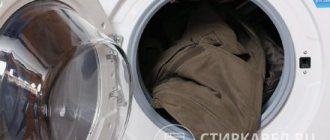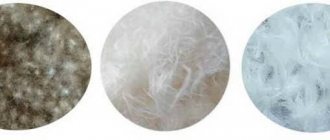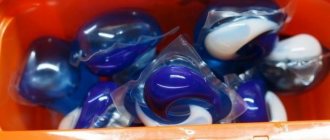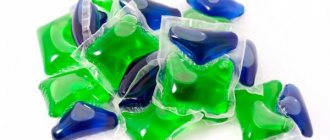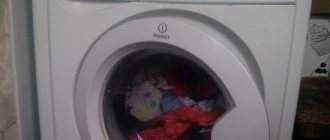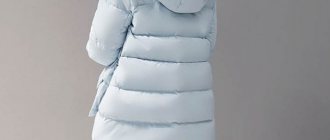Features of clothing with a membrane
The membrane material was invented back in 1969 by American inventors and was called Gor-Tex.
Currently, depending on the purpose, membrane clothing comes in several types:
- casual;
- professional;
- for active recreation (Gor-Tex Active).
Its design depends on the purpose of the clothing. Usually this is 2, 3 or 2.5 layers. The membrane itself, which is a thin film with micropores, is attached to the base or located between layers of fabric. The pores are very small, they do not let moisture in from the outside, but with great physical activity they easily remove sweat from the body to the outside.
A wear-resistant coating is used as the top layer, which is additionally treated with a special composition that repels water.
This type of outerwear has the following positive characteristics:
- does not allow moisture to pass through from the outside, but allows the skin to “breathe”;
- protects from wind;
- keeps warm;
- is light and durable.
Along with this, there are also disadvantages:
- High price
- Relatively short service life
- Special requirements for product care
Membrane properties
For manufacturers of membrane clothing, the main task is to use such technology not only for sewing sports equipment, but also for everyday things, because such material has many advantages.
If we take a waterproof membrane jacket and “saw” it into pieces, we will see matter that consists of the following:
- Outer fabric treated with impregnation to repel water.
- A membrane layer having a porous structure similar to a mesh.
- Fabric covering and protecting the membrane mesh from mechanical stress.
Thanks to all these layers, clothes made from such fabric become durable, light and comfortable. The previously listed properties of the membrane, namely breathability, heat retention and moisture protection, are necessary for clothing for people leading an active lifestyle.
The main “ingredient” of the membrane material is the finest mesh, the pores of which do not allow moisture to pass through, but, on the contrary, push them out when a person sweats.
Despite its excellent protection, this material can get dirty and will have to be washed.
Detergents for washing membrane fabrics
Choosing the right and high-quality membrane washing agent is very important. Using the first thing that comes to hand, you can simply ruin an expensive item.
A common question among owners of such things is: can the membrane be washed with regular powder? The answer is categorical - no, it will not work, the film does not tolerate sulfates and phosphates, which are present in large quantities in detergents of this type. In addition, the pores of the membrane will become clogged with powder particles, and it will lose its protective properties.
Recommended products
- The easiest way is to wash clothes with laundry soap. It dissolves well in water and removes dirt from the fabric. The soap is grated, and the resulting fine shavings are dissolved in water without any residue.
- Shampoo, for example, Salton Sport and Domal Sport. This is a certified cleaning product for sportswear with climate membranes. For one wash, the manufacturer recommends using 20-25 ml of liquid. You can buy them in sports stores, along with clothes.
- Special gel, for example, Denkmit Fresh Sensation. When washing in an automatic machine, it is poured into the dry powder compartment. This product does not damage the fabric and takes good care of the membrane. In addition, it gives clothes water-repellent properties.
- Nikwax tech wash liquid soap for membrane. An effective product that removes even heavy dirt and residues of other detergents. It is recommended to use in tandem with impregnation of the same series, strictly following the instructions.
- According to user reviews, gel-con for the membrane will only cope with minor stains and get rid of unpleasant odors.
Advice! If you do wash the membrane with powder or gel containing sulfates, do not despair. Treat it with aerosol impregnation and henceforth use only suitable products.
What should not be used for washing?
In addition to washing powder, the following products are prohibited:
- containing chlorine. They significantly expand the micropores of the membrane, as a result of which it retains moisture from the external environment worse. In addition, chlorine, even in the lowest concentrations, can dissolve water-repellent impregnation;
- any bleaches and stain removers. They act on membrane products in the same way as chlorine.
- You shouldn't use fabric softener either. They give things a pleasant smell, but degrade the quality of the membrane.
Advice! It is not necessary to wash the entire item; you can often wipe away stains with a sponge and laundry soap or dishwashing detergent.
Since membrane products require very careful handling, it is best to wash and tidy them yourself rather than take them to the dry cleaner. After all, the client has no way to track which product the dry cleaning staff uses. It will be very difficult to prove that the item was damaged.
Which detergent to choose for washing in the washing machine?
It is more difficult to wash a winter suit or overalls with a membrane by hand than a jacket, so it is better to machine wash bulky items. The efficiency and safety of washing depends on the choice of detergent composition. Please note that not all products suitable for the manual method can be used in a washing machine.
The best compositions intended for clothing care:
- DOMAL. The company produces a special product, Sport Fein Fashion, which is suitable for washing jackets, suits, and overalls with a membrane layer. The product contains a moisturizing balm that makes things soft. After drying, it is recommended to treat winter clothes with moisture-proof impregnation from the same company to prevent getting wet.
- Nikwax Tech Wash. This product is suitable for washing membrane down jackets, trousers, jackets in a washing machine and by hand. In addition to excellent washing properties, the composition helps to remove from the membrane pores the remains of the powder that was previously used for care. It does not require the use of impregnation after drying things, since it creates a water-repellent layer on the surface.
Denkmit Fresh Sensation
- Denkmit Fresh Sensation. A budget product in the form of a gel for the care of sportswear and membrane clothing, recommended for washing in a machine or by hand. Additionally, it is necessary to use an impregnating spray, since the gel does not have protective properties.
- Perwoll. The series of products is represented by gels for washing all types of sportswear, including those with a membrane layer. It has good cleaning properties, eliminates the smell of sweat, gives things a pleasant aroma and effectively fights fat deposits on the surface of the fabric.
- Laundry soap. Grated soap shavings or liquid detergent are added directly to the drum of the washing machine along with the clothes. It washes perfectly, is easy to rinse and does not spoil things with a membrane.
On a note! If you don’t have any of the above products at hand, and you need to wash your clothes urgently, then you can use regular hair shampoo. A bonus will be the pleasant aroma and softness of the fabric.
How to properly wash membrane clothes?
Contrary to existing myths, modern clothes with membranes must be washed. If this is not done, the pores will become clogged with dust and dirt, and the protective properties of such material will decrease.
Washing a jacket or other large item with a membrane can be done by hand or in a washing machine. But it has its own rules and features:
- Before washing, be sure to study the manufacturer's recommendations on the label.
- Use suitable detergent.
- Do not treat fabric with bleaches or stain removers.
- It is not recommended to soak clothes with a membrane.
- Wash at low temperatures, no more than 40°C. At high. temperatures, the pores of the membrane will simply stick together and it will stop working.
- Rinse thoroughly to ensure no streaks remain after drying.
- After washing, dry the product properly.
You also need to prepare your clothes: empty your pockets, remove small debris from them, fasten all buttons and zippers, unfasten the fur. To avoid damage to buttons and other fragile accessories, they are sealed with tape.
Machine washable
As with washing down jackets, membrane clothing has its own rules and restrictions when machine washing. To successfully wash such items in a washing machine, you need to follow the following algorithm:
- Place the product in the drum. It is advisable to wash large items one at a time - a jacket separately, trousers separately.
- Pour in a high-quality detergent; washing powder is completely eliminated.
- Set the most gentle mode, optimally manual or delicate. The maximum permissible temperature limit is 40°C. This is very important, since the membrane will deteriorate in hot water, and it will be impossible to restore its functional qualities.
- Set to double rinse.
- Press only by hand without twisting. You cannot use a machine spin, as this can destroy the outer water-repellent layer.
- Wet items must be dried properly.
Handwash
Items made from membrane fabric can be easily washed without a machine, by hand. In this case, the risk of damaging the membrane will be lower.
Here's how to proceed:
- Prepare a bowl of warm or cool water. Temperature is critical. Just as in the case of an automatic machine, it should not exceed 40°C, the optimal option is 30-35°C. The container should be voluminous so that you don’t have to wrinkle the clothes too much.
- Dissolve the chosen product well in water.
- Place the product in water and wash it very carefully. If there are stains on the surface, you can get rid of them by rubbing with a brush and baby or laundry soap.
- Rinse the items twice and, as a final step, give them a cool shower.
- Dry the product.
How to prepare material for washing
No matter how carefully we wear things, sooner or later the moment comes when washing is necessary. Likewise, things made from the membrane have to be washed, because the pores of this miracle film become clogged with the products of our sweat glands and lose their effectiveness.
Since it is very difficult to avoid contamination, the surface of the clothing has to be cleaned, but you need to be very careful with membrane fabric.
When you decide to wash the jacket membrane, do not forget that the film located among the protective material does not easily withstand high temperatures and aggressive phosphates contained in powders, bleaches or stain removers.
Of course, for fear of damaging the fabric with the wrong product or improper processing, you can avoid machine washing and constantly brush your clothes, removing surface dirt. Clogged pores of the membrane can lead to the fact that it will stop “breathing” and the purpose of the innovative material will be lost.
Preparing items made from membrane fabric before washing is as follows:
- All fasteners, buttons and zippers must be fastened.
- If the top layer is stained, try to rub the stain off or shake out the dust from the item.
- Washing is allowed only in warm water (temperature maximum 40˚).
- Wash miracle clothes separately from other clothes.
Proper drying
Drying clothes with a membrane also needs to follow certain rules. Compliance with them will help extend the life of things.
- Do not twist under any circumstances. You can hang the jacket by the shoulders to drain excess moisture, and then gently, without twisting movements, squeeze it out with your palms.
- Wrap the product in a large towel or an unnecessary old sheet. This will also help absorb excess liquid.
- When the fabric is soaked, lay the jacket or trousers on a hard, horizontal surface. It should be covered with a dry cloth, which needs to be changed as it gets wet.
The room in which things are dried should be well ventilated. It is strictly forbidden to dry clothes on hot radiators and heaters, or to iron them. After the items have dried, they are treated with impregnation.
Drying and ironing
Immediately after washing, remove the clothes from the machine or basin and hang them on a hanger to drain off excess moisture. If you leave things crumpled for a long time, one part of the clothing may turn the other side a brighter or darker color.
Drying rules must be followed to maintain airtight and water-repellent properties.
Basic Rules:
- Do not dry the membrane jacket in a washing machine, on radiators, or on heaters.
- The product should be hung away from open flames. Hanging the item close to the fire will destroy the membrane.
- It is recommended to dry the ski overalls at room temperature, flattened.
- It is advisable to place the clothes horizontally on a towel after the water has drained. The fabric will need to be changed as it gets wet. It is advisable to turn the jacket over sometimes so that the lower part lying on the towel does not become sticky and start to smell unpleasant.
Membrane items should not be ironed at high temperatures. If during the drying process it was not possible to avoid the appearance of folds and wrinkles, you can use an iron, but set the lowest temperature.
The iron must not come into contact with the fabric. It must be kept at a short distance from the membrane jacket.
It is necessary to smooth the base fabric, but not to allow the membrane to warm up.
Impregnation of clothes
The top layer is impregnated at the production stage. The water-repellent composition allows the fabric to always remain dry. But over time, after 4-5 washes, this composition is gradually washed out, and the top layer of clothing gradually allows moisture to pass through.
To prevent this from happening, you need to process the clothes yourself. Impregnation for membrane clothing can be purchased in the form of liquid products and aerosol sprays.
Advice! When choosing a product, it is better to consult with the seller which one is suitable for your clothes.
When using liquid, you need to prepare a solution and rinse your clothes in it. The manufacturer indicates the ratio of liquid impregnation and water in the instructions for use. It must be strictly followed. The aerosol product is simply sprayed evenly onto the fabric. The frequency of use for a liquid product is once every 2-3 washes, for an aerosol - once a month, if the item is used actively, or less often.
Attention! Excessive and frequent use of impregnation clogs the pores in the membrane and reduces its properties.
In any case, the procedure is carried out only after washing. It should be taken into account that after repeated application of impregnation, the color of the product may change.
How to care for membrane clothing?
Regular care of membrane clothing is very important. This determines how long the product will last.
The following recommendations will help increase their lifespan:
- It is necessary to wash clothes with a membrane when they become dirty. Recommended frequency 1-2 times per season, depending on the frequency of use.
- You need to store such things in a closet, as they easily absorb foreign odors - food, tobacco smoke, perfume.
- The storage area for membrane products should not be damp. It is advisable that it be clean and well ventilated.



